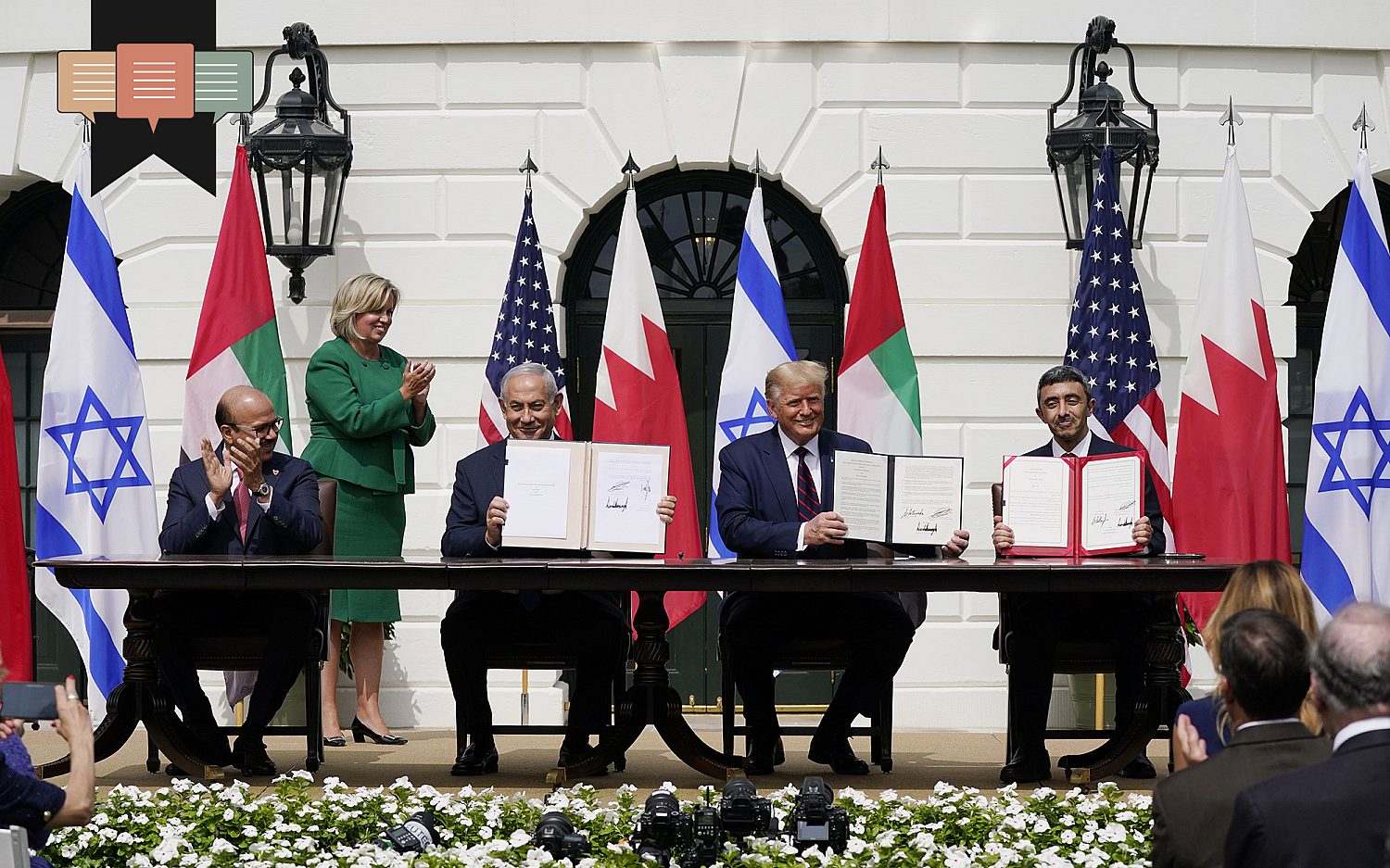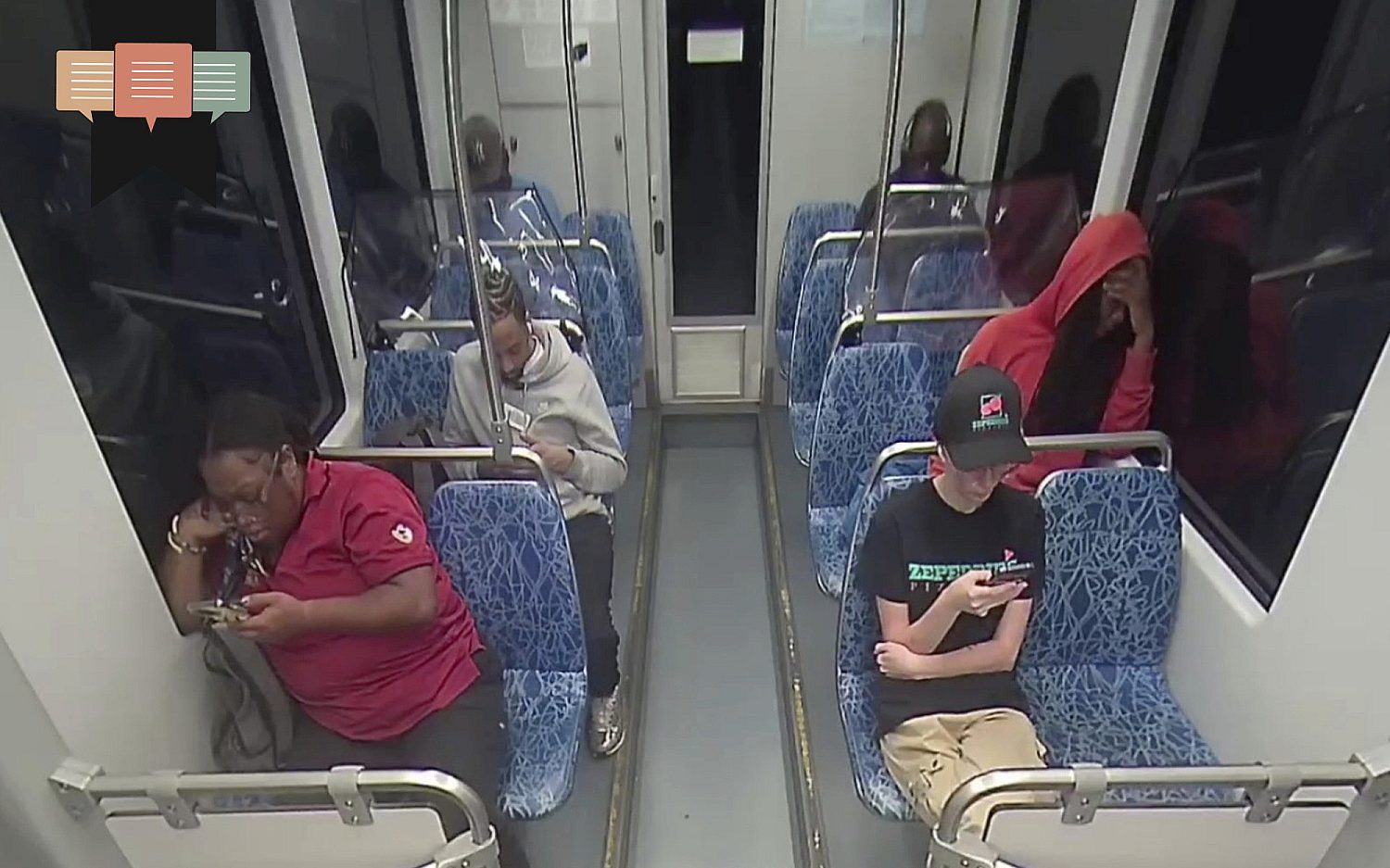A new dawn for the Middle East?
The Abraham Accords and Trump’s vision for peace
Israeli Prime Minister Benjamin Netanyahu and U.S. President Donald Trump (center) sign the Abraham Accords with leaders from Bahrain and the UAE at the White House on Sept. 15, 2020. Associated Press / Photo by Alex Brandon

Full access isn’t far.
We can’t release more of our sound journalism without a subscription, but we can make it easy for you to come aboard.
Get started for as low as $3.99 per month.
Current WORLD subscribers can log in to access content. Just go to "SIGN IN" at the top right.
LET'S GOAlready a member? Sign in.
The Middle East stands on the brink of a historic transformation, a hope grounded not in mere optimism but in recent geopolitical shifts and the leadership of President Donald Trump. By leveraging the decline of Iran, Hamas, Hezbollah, and the Houthis, Trump is fostering a new Middle East where Israel and its Arab neighbors can live side by side in peace.
The Abraham Accords, launched in 2020, have already transformed aspects in the region by forging unprecedented ties between Israel and Arab Muslim nations, such as the United Arab Emirates, Bahrain, Morocco, and Sudan. Now, in 2025, with Trump’s second administration driving diplomatic momentum, the accords are poised to expand in ways few imagined, potentially embracing Syria, Saudi Arabia, Mauritania, and even Lebanon. Yet, we must temper our excitement with awareness of the region’s complex challenges.
The Abraham Accords represent a religiopolitical breakthrough, fostering economic and political reconciliation among former enemies and promoting peace through a shared pursuit of stability and prosperity between Muslims and the Jewish state. The accords have delivered tangible results. Trade with signatory states has surged, with 25% of Israel’s defense exports now directed to these partners, and initiatives like the Abraham Fund have spurred economic integration. The UAE’s hosting of cultural exchanges and Israel’s vision as a hub connecting Africa, Asia, and Europe highlight the accords’ transformative potential. The true game-changer, however, lies in their imminent expansion, driven by Trump’s diplomacy and a radically altered regional landscape.
The role of the United States, and of President Trump, is pivotal.
His first administration brokered the original accords, defying decades of conventional wisdom that peace required first resolving the Palestinian question. Now the White House is intensifying efforts in the area, capitalizing on the weakening of Iran and its proxies—Hamas, Hezbollah, and the Houthis. Economic sanctions and regional isolation have diminished Iran’s ability to destabilize the region. Hamas’s military capacity has been severely degraded since its October 2023 terrorist attack, while Hezbollah’s influence has waned with the fall of Syria’s Assad regime in December 2024. The Houthis, facing setbacks in Yemen, pose a reduced threat to Red Sea security.
This power vacuum has created a rare diplomatic window, and Trump is seizing it, pushing for Saudi Arabia and Syria to join the accords and laying the groundwork for a broader coalition.
Syria’s potential inclusion is striking. Its new leader, Ahmed al-Sharaa, has signaled openness to dialogue with Israel, a stunning shift for a nation long aligned with Iran. While not explicitly stated, Trump’s removal of sanctions on Syria may reflect an understanding that normalization with Israel could follow. Although Syria’s interim government prioritizes reverting to the 1974 ceasefire agreement and negotiating the Golan Heights, the mere fact of engagement marks a breakthrough. Trump’s administration is facilitating these dialogues, offering Syria economic incentives to align with the accords’ vision of regional cooperation. This could pave the way for Lebanon, where Hezbollah’s decline and President Michel Aoun’s 2020 openness to peace talks suggest a distant but possible path to reconciliation.
Saudi Arabia, the region’s heavyweight, is the cornerstone. Trump’s team is aggressively pursuing Saudi-Israeli normalization, recognizing its potential to catalyze broader acceptance of Israel across the entire Muslim world. Saudi Arabia has already permitted Israeli overflights and engaged in quiet security cooperation, such as joint efforts in the Red Sea. While the kingdom insists on a Palestinian state—a stance hardened by the Gaza conflict—Trump’s tactical diplomacy may offer incentives like advanced U.S. defense systems to bridge the gap. The Saudis could bypass the Palestinian issue if the incentives are compelling. The economic allure could establish ways, bypassing catchphrases through good deals, promising prosperity.
Mauritania, though less prominent, adds to the hopeful narrative. Its support for the UAE’s normalization decision signals openness to future engagement, potentially as a symbolic bridge to other Muslim-majority nations like Oman or Qatar. This expanding coalition could reshape the Middle East, fostering a network of trade, security, and cultural ties that counters extremism and fulfills the accords’ promise of a “new Middle East.”
Yet, we must not be naïve, as the Palestinian issue remains a tough obstacle. Arab public opinion, inflamed by the Gaza conflict, shows low support for normalization. The Trump administration, as the primary broker of these accords, must recognize that Arab leaders balance public sentiment with geopolitical strategy. However, hope and aspiration for peace currently outweigh the hurdles. U.S. leadership, combined with the accords’ resilience—maintaining ties despite Gaza’s turmoil—offers a path forward. Proactive American leadership can strengthen regional ties, a call Trump seems poised to answer. This aligns with a vision of peace that counters jihadist threats, uniting former enemies against terrorism.
We stand at a crossroads. The Abraham Accords could create a new Middle East where Israel and its Arab neighbors coexist in peace, their economies intertwined, their peoples reconciled. The road is fraught, as Sunni-Shiite regional rivalries and public skepticism demand careful navigation. However, the weakening of Iran and its proxies, coupled with Trump’s unrelenting pursuit of peace and diplomacy, offers a once-in-a-generation chance.
Let’s pray for wisdom, courage, and the peace of Jerusalem, hoping that a new dawn is rising in the Middle East.
These daily articles have become part of my steady diet. —Barbara
Sign up to receive the WORLD Opinions email newsletter each weekday for sound commentary from trusted voices.Read the Latest from WORLD Opinions
R. Albert Mohler Jr. | Response to release of security video shows deep division between liberals and conservatives
Barton J. Gingerich | The deeply rooted problem with a convert to Roman Catholicism administering the Lord’s Supper in a PCA church
Nathan Leamer | We should view artificial intelligence as a potential opportunity for the Church
Joe Rigney | Slayings in Charlotte, Minneapolis, and Nashville reveal a deep spiritual abyss in America






Please wait while we load the latest comments...
Comments
Please register, subscribe, or log in to comment on this article.